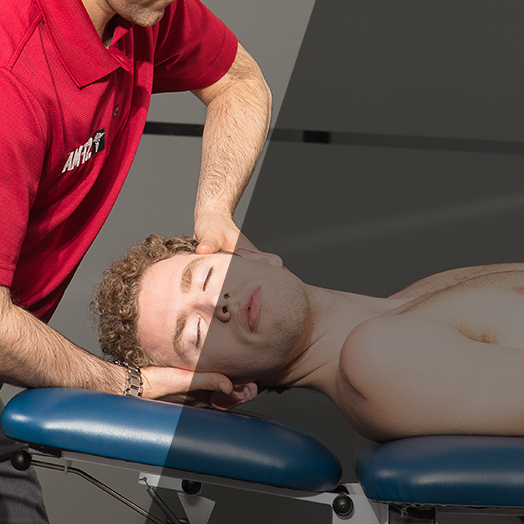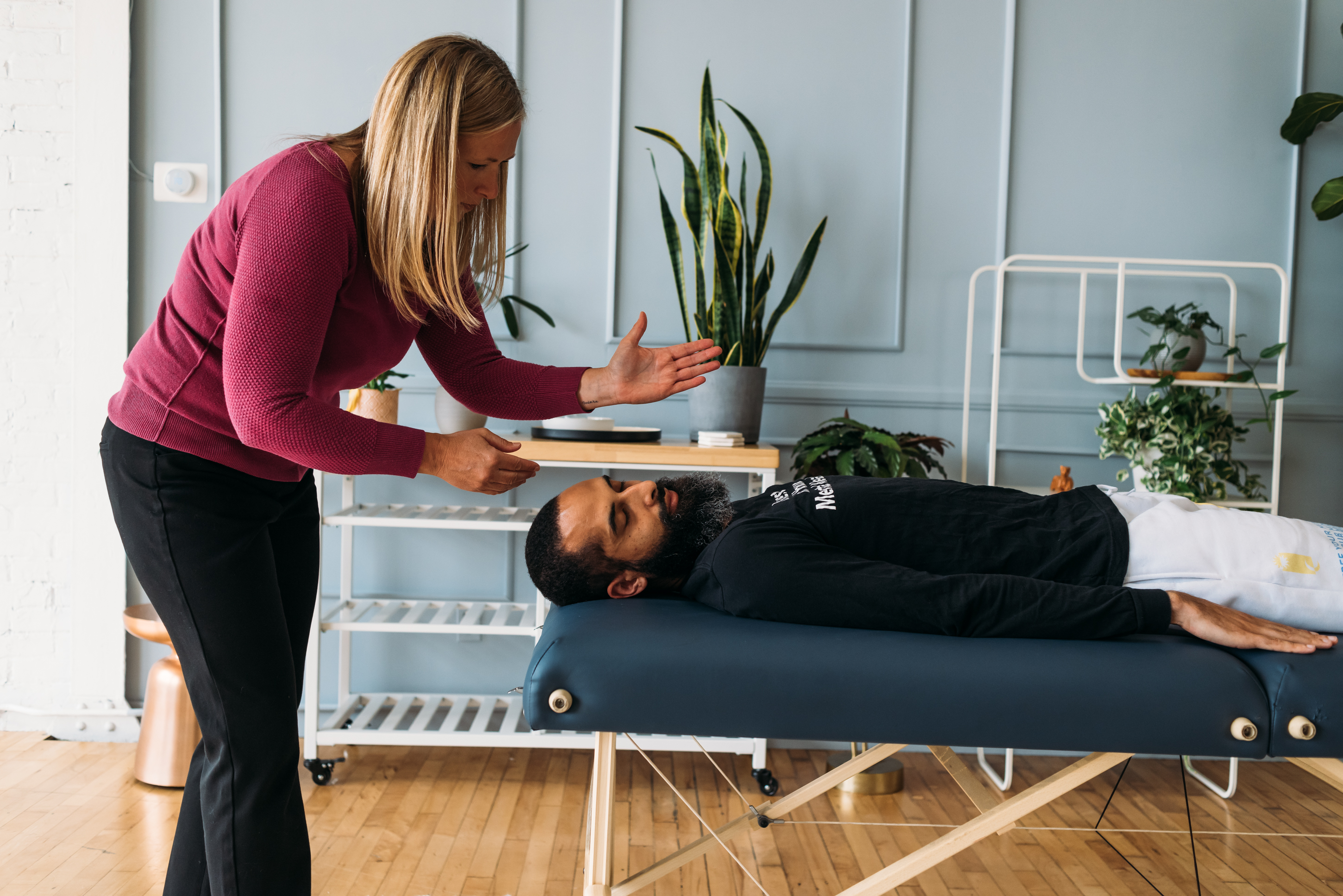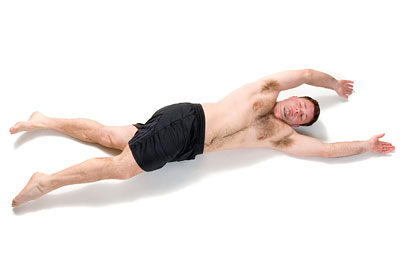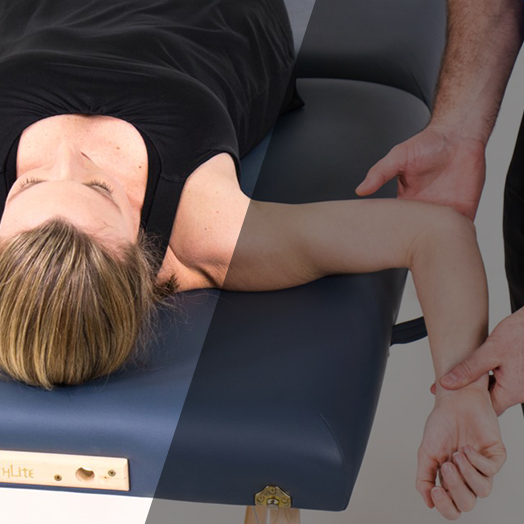Survival of the Fittest Part III
Written by Robert "Skip" George, DC, CCSP, CSCS SFMA
Survival of the Fittest: Integrating Chiropractic, Rehabilitation and Sport Performance Training
Part III: Move Well and Move Often: Introduction to Kalosthenos and the Turkish Get Up
By Robert “Skip” George, D.C., CCSP, CSCS
Recently Craig Liebenson, D.C. and Charlie Weingroft, P.T. teamed up to teach a seminar called “Bridging the Gap: Rehab to Performance Training”. I had the privilege of speaking with Craig and Charlie regarding the changes in chiropractic, physical therapy, the fitness industry and our healthcare system as well. The blend of rehabilitation, training and lifestyle coaching is becoming an effective approach in not only the fitness industry but in many of our clinics as well. Whether we like it or not, personal trainers are treating back pain with powerful assessment tools and corrective exercise —and they are getting results!
Strength and conditioning associations as well as companies in the fitness industry, like Perform Better, are doing an excellent job of teaching doctors, therapists and personal trainers about the role of muscles, joints, and the nervous system in painful conditions of the spine and extremities. As an example, over 5000 doc’s, P.T.’s, ATC’s and trainers are now certified FMS providers.
This recent availability of skill development has enabled personal trainers to provide a more clinical approach to their clients. And, with all of the changes and uncertainty in healthcare, clients return to personal trainers over and over without insurance reimbursement.
Perry Nickleston, D.C. and Jeff Tucker, D.C have written numerous articles regarding rehabilitation and exercise including topics such as proper overhead squat mechanics, the kettlebell swing, and nutrition for patients and athletes. They are leaders in one of the trends in many chiropractic practices that blend rehabilitation and sport performance training and utilize the Functional Movement System.
Teaching patients not only about chiropractic but how to move and function well is a needed approach for evidence based treatement. This integration is becoming a perfect match for the 21st century practice and defines a critical niche in the rapidly changing healthcare marketplace where trying to collect reimbursement from a third party is often more trouble than it is worth!
This article is the third in a series that I describe the Functional Movement System which includes the Functional Movement Screen (FMS), the Selective Functional Movement Assessment (SMFA), and the Y-Balance Test. This system can help you determine which patient or athlete is at risk for injury, which movement patterns or regions are dysfunctional and what treatment or corrective exercise strategy is needed to address those issues in combination with your chiropractic treatment.
Just for fun, let’s examine what a typical American looks like in terms of posture, waistline and ability to function or move well. Are we shining examples of form, function and fitness? I think that most of us can agree that the typical hunched forward and rounded shoulder posture with moderate to severe de-conditioning is a significant reason patients enter our clinics. It is not a stretch to observe that this de-evolution of sedentary human beings in a rapidly changing and highly stressful modern society is a major contributor to the unsustainable costs in our healthcare system. As chiropractors, we need to be at the “tip of the sword” when it comes to addressing what is needed to help heal our ailing healthcare system!
Regarding posture and patterns of movement, Mike Boyle and Gray Cook came up with what is known as the joint by joint approach that describes how our bodies move, stabilize and function. Essentially, the ankles, hips and thoracic spine need to be predominately mobile and the knees, lumbar spine and scapulae need to be stable. What contributes to or can cause dysfunction, pain and ultimately injury is the reversal of these patterns. If we don’t recognize these patterns and deal with them effectively, we can actually contribute and prolong a painful condition vs. treating it effectively.
For example, not enough hip mobility will result in an excess lumbar spine movement compensation. How many of us have treated a lumbar disc disorder or misalignment issues because of hip immobility and decreased lumbar stability ? Shoulder conditions such as impingement, labrum or rotator cuff tears are often associated with unstable scapulae and decreased extension of the thoracic spine especially in athletes that use repetitive overhead motion. Add rounded shoulders with forward head lean and headaches, cervical radiculitis or lumbo-pelvic pain can occur.
A must read is Gray Cook’s book “Athletic Body in Balance” in addition to his new book, “Movement”. He states that we are walking around like turtles, head sticking out forward and a big shell weighing us down. What happens when we get put on our back and try to get up? It’s not a pretty sight imagining we are flat on our back flailing to get up. But this is exactly what happens to many overweight or elderly patients. We will be seeing more and more aging “Baby Boomers” that want to live and function well and we have an important role in their healthcare outcomes. Unfortunately, we will be seeing more obese patients unless this costly and destructive process changes.
So, we are then told to exercise and diet but what do we typically do for exercise? How about going to the gym, sitting on a machine and pulling or pushing weights while hunched over with lousy posture. Or, after sitting for 40-60 hours per week, let’s go out and put staggering amounts of rotational force on our lower back and a de-conditioned core with a round or two of golf or our Wednesday night softball league? Sounds like a lot of fun to me just before the ACL goes or L-5 disc blows!
The public is told to “see your doctor” before starting an exercise program. Most patients are cleared after history and vitals are considered “normal” enough. But nothing is mentioned about seeing a doctor to determine how well you move before starting any exercise program. How about see your “movement specialist” before even considering an exercise program.
The beauty of the Functional Movement System is that those regions that need mobility or stability can be addressed with a proper assessment and functional/strength training. After a functional assessment, it just makes sense to reinforce functional patterns with functional exercise to build a foundation of proper movement, strength and athletic skill. Now we are beginning to get somewhere to build form, function and fitness!
The word “calisthenics” appeared as a form of exercise that uses body weight or a hand held weight for strength and conditioning in the early 1800’s. Ancient Greeks had a word called “Kalos” which means beautiful and “Sthenos” which means strength. Kalos Sthenos means moving well or beautifully and possessing great strength and was a far cry from pushing or pulling on a seated machine. Isn’t ironic that progress in developing fitness equipment could actually have the potential to do more harm than good and that an exercise created decades or even centuries before with a simple weight is more effective at helping us move and function more authentically?
One of the best exercises that personifies “Kalos Sthenos” by integrating, mobility, stability, symmetry(left, right, front, back), coordination, balance and yes, beautiful strength, is the “Turkish Get Up” or “TGU”, using the Kettlebell.
Kettlebell training has become popular in today’s fitness, performance and rehabilitation world. It is an important tool for rehabilitation or strength and performance training because it reinforces movement where movement is needed, stability where stability is needed, strength, coordination, symmetry and especially proper posture.
There are seven distinct parts to the TGU. Starting from the ground is
Step One: Roll to Press. One of the most important parts of the exercise is gripping the kettlebell. A straight or neutral wrist holding the offset weight is used as well as “crushing” or squeezing the grip very hard. This crushing of the grip leads to a progression of hand, arm, shoulder and chest muscle activation that will provide greater strength and stability throughout the movement. In addition, “packing” that shoulder down and away from the ears stabilizes the scapulo-thoracic joint to maintain proper and safe form throughout the exercise.
Step two: Press to Elbow. It is simply rolling under the kettlebell to the elbow. Force generation is required to overcome the inertia of being flat on your back. Again, the shoulder is “packed” or retracted down and medially towards hips.
Step three: Elbow to Post. This is a continuation from the elbow to the hand and requires continual gripping, keep packing of the shoulder, extension of the T-spine, and mobility of the hips. Can you see where each step is starting to reinforce the joint by joint approach while moving in a coordinated, multi joint pattern?
Step four: Post to high pelvis. This illuminates the ability to extend the hips upward and forward creating a space to bring the leg back next to the hand. Talk about taking bridging to a different level!
Step five: High Pelvis to Bend( a.k.a High Pelvis to Knee). This step requires coordination with strength. Notice the mobility of the hips, extension of thoracic spine, stability and position of scapulae and lumbar spine.
Step six: Knee to Half Kneeling. Keep shoulders packed down towards hips (note: ears are poison to the shoulders!) wrist and hand vertical, T-spine elongated and relaxed, drive straight up to half kneeling.
Step seven: Half Kneeling to Stand. Continue with step six instructions for shoulders, hands, arms and spine then drive from the back foot to standing.
After each of seven steps are completed from the ground to standing reverse order all the way back to the ground. Then, switch and perform the TGU on the other side.
This one of the most important exercises in rehab and sport performance training and is an important tool for the doctor who wants to integrate corrective exercise into their practice. The TGU reinforces the functional movement patterns including stability, coordination, symmetry, balance and strength that allow us to thrive in how we work and in recreation. It is also an ideal exercise to restore function after an injury, augment sport and performance training, has a low financial cost for equipment and doesn’t require much office space.
The description and pictures are used for introducing you to the TGU. Only perform this exercise after you have been instructed by an “RKC” (Russian Kettlebell Certified) instructor, or become an “RKC”, and have a minimum score of 14 or more with no asymmetries on the Functional Movement Screen. Without proper instruction and a proper movement assessment, there is a very real risk of injury and this exercise should be performed by fit individuals. And, it needs to be learned without weight first and then only appropriate weight is added based on the patient’s age, fitness and functional level.
References:
1. Kettlebells from the Ground Up/The Kalos Sthenos Manual and DVDby Dr. Mark Cheng with Gray Cook and Brett Jones
2. Mike Boyle, Keynote Speaker, Notesfrom the April 2011 American Chiropractic Board of Sports Physicians Sport Symposium, “Joint by Joint” Approach
3. Movementby Gray Cook, MSPT, OCS, CSCS
4. Rehabilitation of the Spine, Second Edition, by Craig Liebenson, D.C.
5. The Selective Functional Movement Assessment Workbook, Advanced Clinical Integrationby Phil Pliskey, DPT and Kyle Kiesel, P T
Robert “Skip” George, D.C., CCSP, CSCS owns Optimum Fitness and Health, where he integrates Chiropractic, Rehabilitation and Fitness/Performance Training. He is a certified Functional Movement Screen (FMS) and Selective Functional Movement Assessment (SFMA) provider as well as a Functional Movement Screen Instructor. He can be contacted at Dr.George@sbcglobal.net





